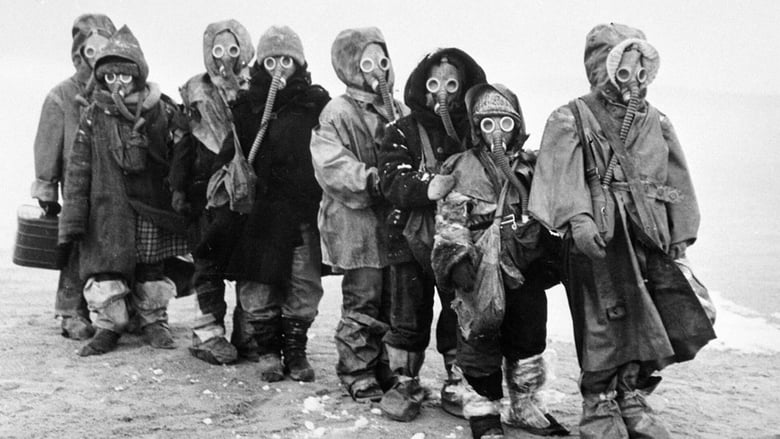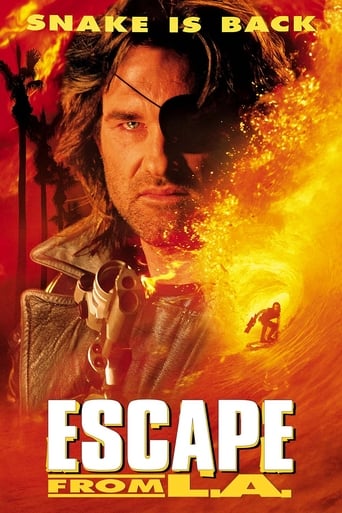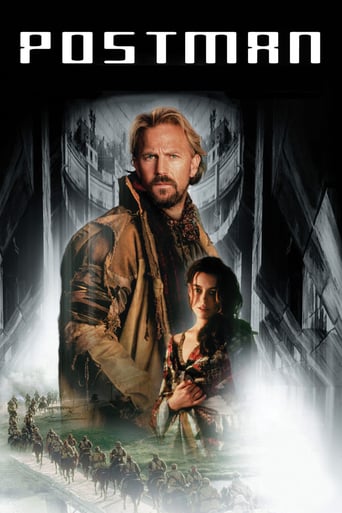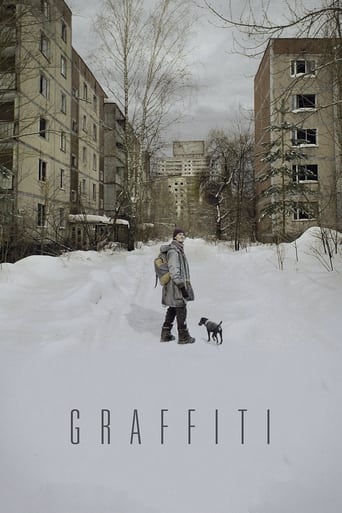

Dead Man's Letters (1986)
In a world after the nuclear apocalypse a scholar helps a small group of children and adults survive, staying with them in the basement of the former museum of history. In his mind he writes letters to his son — though it is obvious that they will never be read.
Watch Trailer
Cast
Similar titles



Reviews
Touches You
Slow pace in the most part of the movie.
Load of rubbish!!
Although it has its amusing moments, in eneral the plot does not convince.
Depressive in tone but with a hopeful optimism at its end, this film explores how human beings might survive the immediate aftermath of a nuclear bomb explosion that wipes out entire cities and all life above ground and renders the physical environment sterile and toxic. In such a setting people live without hope and watch one another disintegrate emotionally and mentally as well as physically. The bare and patchy plot centres around a physicist huddled with a few other survivors in a bunker beneath a museum after such a wipe-out. The physicist tends to his wife, dying from radiation sickness, and composes letters to their young son who was separated from them during the explosion and the chaos that followed, and is now missing. One day while searching for the boy and other survivors, the physicist meets a group of orphaned children, all traumatised by the explosion, and arranges for them all to go to a so-called Central Bunker where they might be cared for by government doctors. Martial law and a strict curfew have been imposed across the country and the physicist risks his life to get medicine for his wife; while he's gone, the wife dies. The remaining survivors in the museum bunker ponder their circumstances and try to cope with various rationalisation strategies. Eventually they're all ordered to go to the Central Bunker but the physicist elects to remain and moreover takes in the orphans when the Central Bunker rejects them for being sick.The plot depends heavily on the actors and their environment to convey its message and ideas. The actors have worn, sometimes craggy faces which portray hope, despair, anger and resignation in turns. The interior settings are dark and look cramped with primitive living conditions; exterior settings are dominated by roaring winds, the wreckage of buildings, cars and machines, puddles of toxic water and undecayed bodies. An air of oppression reinforced by helicopter and tank patrols and periodic megaphone announcements adds to the overall feeling of despair and hopelessness. Use of sepia tones in the filmstock emphasises the desolation and wretchedness of life and accentuates the strains of care and surviving on the actors' faces. Viewers see the details of soil texture, of water that looks like mercury and, in a flooded university library, of the wet pulp of paper and sodden towers of books. One scene in the film appears in shades of blue that highlight the secret and possibly illegal or dangerous work being done by two characters.The cinematography captures perfectly the small scale of human life in an extraordinary and extreme environment. It reaches its peak of morose and pessimistic expression in a Christmas scene in which the physicist and his orphans build a Christmas tree out of wire and industrial scrap and light candles on the tree. The camera draws back to show the scene in full: stark in its loneliness but beautiful all the same. It's like a small beacon of light in a never-ending black night. Viewers sense that the plot has reached its lowest point and from here on, hope may arise; it harks back to the pagan origin of Christmas as a mid-winter festival in which people celebrated the death of the old year and the birth of the new year. What happens to the physicist and the children next underlines this passing-of-the-torch motif.There are other moments of great beauty in the film: the nuclear disaster itself with its montage of cities on fire and being blown down by huge winds, over which a soprano sings and a child babbles in the background, is a memorable sight; and the orphaned children venturing out into the barren landscape and over the horizon beneath an overcast sky through which thin rays of sun shine is a very beautiful and moving scene. Even the sepia tones themselves lend a kind of golden aura over the actors and the sets as they bring out the harshness and desolation of the lives the characters lead.A few survivors declaim on the purpose and nature of humanity on Earth and where and how humanity went wrong somewhere so that the nuclear calamity was made possible. People were ambitious and greedy, they reached out and made things they didn't fully understand, they tried to know too much but lacked the wisdom and insight to control their knowledge and what they did with it the physicist himself realises the calamity occurred accidentally in a way that's no-one's fault. Here is a message about the absurdity and fragility of existence and how one seemingly trivial yet universal event can set off a chain reaction that results in a nation-wide if not global tragedy. One survivor expounds his view that a new dog-eat-dog world without compassion will be built on the remains of the old one. Another survivor praises the achievements of the human species and then commits suicide. At one point in the film, the physicist expresses guilt that his work might have contributed to the nuclear disaster.In the end, hope is all the physicist has to sustain him: hope that his son is still alive, hope that his wife might survive long enough to see their son, hope that the orphaned children will also survive and help create a new world with new values that won't end in nuclear catastrophe. The children carry his hope as they trudge away from the museum bunker.This is a thoughtful film with scenes of great beauty and sadness.
This "Letters from a Dead Man" simply has got to be, hands down, one of the top three most depressing and pessimistic movies I ever encountered in my life. Of all Sci-Fi films dealing with remnants of life after the apocalypse – and believe me they are quite numerous – this Soviet Union produced sleeper upraises the most nightmarishly realistic and harrowing atmosphere ever. Even in your worst imaginable nightmares and premonitions, the post-nuclear existence probably still doesn't look as decayed and melancholic as illustrated here in this film. Survivors are forced to live underground, in the caves and catacombs of destroyed buildings, and have little else to do but watch each other fading away emotionally as well as physically. They can't go the surface without wearing special outfits and gas masks, but even then there's nothing else to do but stroll around between ruins, car wrecks and rotting corpses. With monotonous photography and the exclusive use of a yellow-tinted picture, director Konstantin Lopushansky (an acolyte of the Russian master Andrei Tarkovsky) fabricates the ideally lugubrious ambiance, and he can also rely on the devoted cast and bleakly void screenplay to assist.The story revolves on Rolan Bykov as a scientist – former Nobel Price winner, even – who entrenched himself underneath the remnants of a library building along with his wife and a handful of co-workers. The titular letters are addressed to his son whom the scientist hasn't seen or heard from since the catastrophe. The letters and above all the hope his son is still alive somewhere is what keeps the poor man going, but how long can you hold on to hope when you see everything and everyone around you dying? "Letters from a Dead Man" is a difficult but ultimately very rewarding cinematic experience to endure. Difficult, of course, because of the emotionally devastating imagery and atmosphere, and because there's actually very little substantial content. We literally stare at a handful of people languishing and eventually dying, with only a small hint at hope near the end. And rewarding because of the depiction of genuine humane sentiments and the thought-provoking messages. It's also highly remarkable how "Letters from a Dead Man" remains continuously vague regarding the cause of the apocalypse and eventually even searches the guilt in the own heart. In a time where movies released on the other side of the Iron Curtain (in Europe and particularly the USA) routinely blamed Russia for the potentially upcoming apocalypse, this tale suggests the root cause of the catastrophe lies in a human error during the launch of a space shuttle. The entire cast gives away tremendous performances. I don't know if these people are veteran actors and actresses in their home countries, but their grimaces and catatonic behavior suggest that they were selected especially for this type of discouraging parable. Fantastic film; though obviously not fit for all occasions and/or audiences.
The story takes place in an eastern European country(no reference is made to what country) after a nuclear war. A military regime has been imposed, there is no reference weather this is a local regime or an occupation. The soldiers tend to carry western weapons like AR pattern rifles and HK G3. The main character lives with coworkers under the university buildings where they once worked , all characters have a type of confession to tell relating to the catastrophe. Decay is everywhere but there is also irony in the decay and destruction, such as the scene in the library that is half covered in water with pages upon pages floating on this evil soup of corpses and texts that the main character ,as a true scholar, goes to a semi submerged desk to study a book. Just like "Threads" this is the only other movie that truly shows how final a nuclear apocalypse would be.
This is quite an obscure picture, even by Russian standards... It is dark (literally), morbid, disturbing at times... It requires quite an effort to watch. But it is one of those quite numerous Russian films that leave a deepest impression on the viewers by making them THINK. It is one of those brilliant "what if.." ponderings, never really giving you a final answer, or even if suggesting anything, leaving it open for the viewers to make their own conclusions. Perfectly cast (faces DO match the setting!), perfectly performed, and even the "special effects" - something Russian film-makers never have money or enthusiasm for - look quite convincing for their time. It IS hard to watch, and one probably has to be in a certain mood to watch it (I'd recommend watching it alone), but it is worthwhile experience and you will never regret it.









